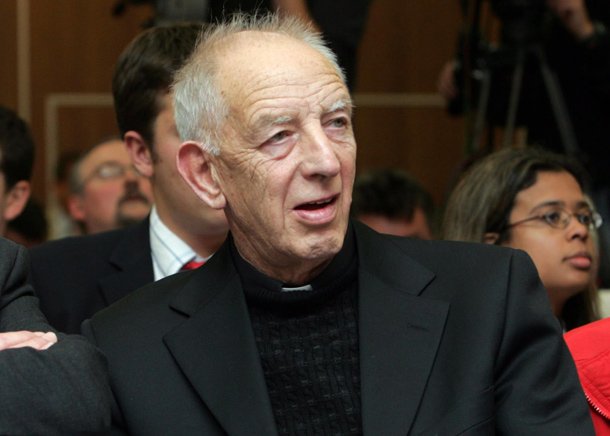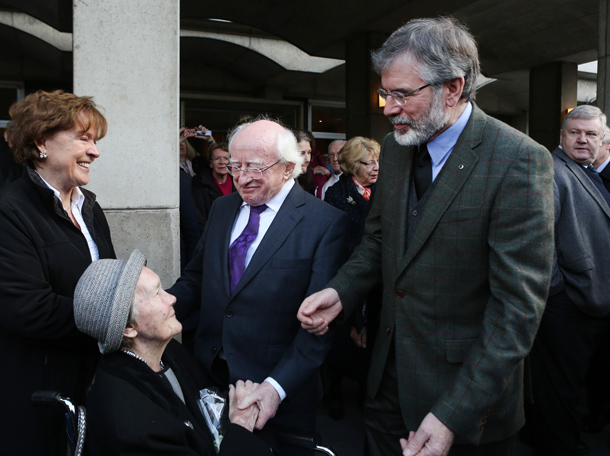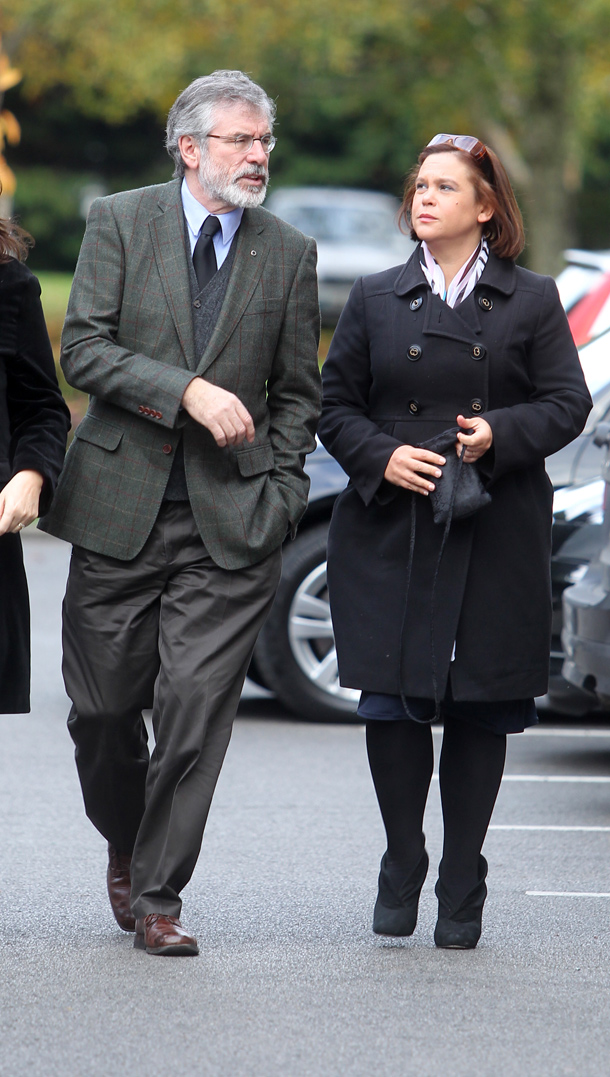1 December 2013 Edition
The Sagart
Fr Alec Reid – ‘Chaplain to the Peace Process’ 5 August 1931 - 22 November 2013

• Fr Alec Reid
I first met Fr Alec in the Cages of Long Kesh, where I was interned, in the mid-1970s. He and Fr Des Wilson were pioneers of peacemaking in those difficult times.
CLONARD MONASTERY is a place of pilgrimage. They came in their hundreds to say a final goodbye to a good priest, a close friend, a gentle and kind-hearted man, and as courageous and humble a human being as you could ever hope to meet.
Fr Alec Reid died in his sleep in the early hours of Friday morning, 22 November. I had been with him the previous Thursday and he was in good form. Talkative, funny and enjoying his hospital tea in St Vincent’s in Dublin. But his condition deteriorated. I was phoned on Thursday night and told that he only had days. I arranged to travel down on Friday to visit him but shortly after 9am on Friday morning we got word that he had quietly passed in his sleep.
I was deeply shocked and saddened at his death. For 40 years I have known him as a good friend to me and my family, and a selfless and unstinting worker in the search for justice and peace. In the midst of hard times, Fr Reid was always there offering comfort and solidarity and advice. He was one of the good guys.
I first met Fr Alec in the Cages of Long Kesh, where I was interned, in the mid-1970s. He and Fr Des Wilson were pioneers of peacemaking in those difficult times. They developed dialogue with loyalists and facilitated meetings between us and some prominent people from loyalist paramilitarism. Both were tenacious peacemakers.
Fr Alec was a friend of the prisoners and part of the line of communication between them and the British Government during the first Hunger Strike in 1980. He actively encouraged initiatives in support of the H-Block Blanketmen and the Armagh women. It was Fr Reid who suggested that we meet with Cardinal Ó Fiaich on the prison issue and it was Fr Reid who persuaded the Cardinal to visit the republican political prisoners on the Blanket Protest in July 1978.

• Fr Alec Reid’s Aunt Eita Kavanagh, President of Ireland Michael D Higgins and Gerry Adams TD after the funeral Mass at the in Marianella Chapel in Rathmines
The then Archbishop Ó Fiaich condemned the conditions under which the prisoners were being held:
“Having spent the whole of Sunday in the prison, I was shocked at the inhuman conditions prevailing in H-Blocks 3, 4 and 5 where over 300 prisoners were incarcerated. One would hardly allow an animal to remain in such conditions, let alone a human being. The nearest approach to it that I have seen was the spectacle of hundreds of homeless people living in sewer pipes in the slums of Calcutta.”
The Sagart and I had many discussions about the conflict, its causes and how it might be ended. Out of those conversations emerged a commitment to dialogue as the first necessary step. In the early 1980s, we tried to commence a process of engagement with the Catholic Hierarchy, the SDLP, and the Irish and British governments. The breakthrough came after Fr Reid wrote a letter to John Hume on 19 May 1986. John phoned the monastery the next day and he arrived at Clonard on 21 May.
Towards the end of 1987, we decided that John and I would begin party-to-party meetings. The Sagart formally wrote to both of us as “an interested third party” inviting Sinn Féin and the SDLP to “explore whether there could be agreement on an overall nationalist strategy for justice and peace”. He presented us with a paper entitled A Concrete Proposal for an Overall Political Strategy to Establish Justice and Peace in Ireland.

• Gerry Adams and Mary Lou McDonald arriving at Fr Alec Reid's funeral Mass
I brought the invitation to the Sinn Féin Ard Chomhairle. It responded positively and John and I met on Monday 11 January for several hours. For the first time our meeting was publicised and there was an immediate and generally hostile response from the governments, the other political parties and sections of the media.
Fr Reid never allowed any of it to distract him. He was tenacious in his pursuit of peace.
He was there during the first hunger strike and became ill as a consequence of the stress. He was there during the battle of the funerals, including the funerals of the IRA Volunteers killed at Gibraltar. He was in Milltown Cemetery when the mourners were attacked. Three were killed and over 60 wounded. Several days later he administered the last rites to the two British soldiers killed at the subsequent funeral of one of the victims, Caoimhín Mac Brádaigh.
Later, Fr Reid helped broker talks between Sinn Féin and the SDLP and between Fianna Fáil and subsequently the Irish Government and Sinn Féin.
In 1999, he became involved in the ongoing efforts to locate the remains of those who had been killed and secretly buried by the IRA and others. After several years it became apparent that our initial hope that all of the remains would be located quickly was naive. He and I discussed this and consequently we put to the governments a proposal that experts in the recovery of remains, using high-tech equipment and archaeological methods, should be employed.
In 2005, he was an independent witness, along with Rev Harold Good, to the IRA putting its arms beyond use and during this time he was also involved in trying to develop a peace process in the Basque Country.
The Sagart lived a full life. His contribution to peace in Ireland is immeasurable. There would not be a Peace Process at this time without his diligent doggedness and his refusal to give up.




